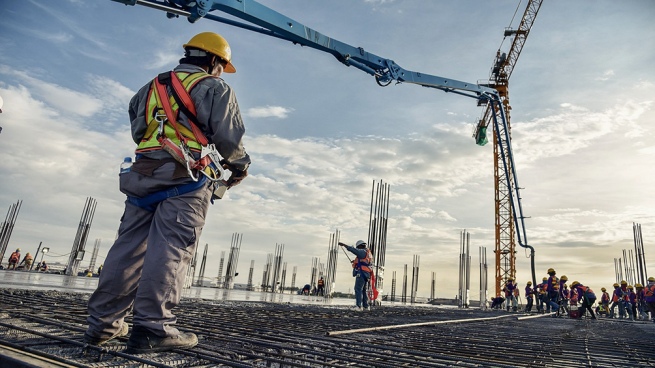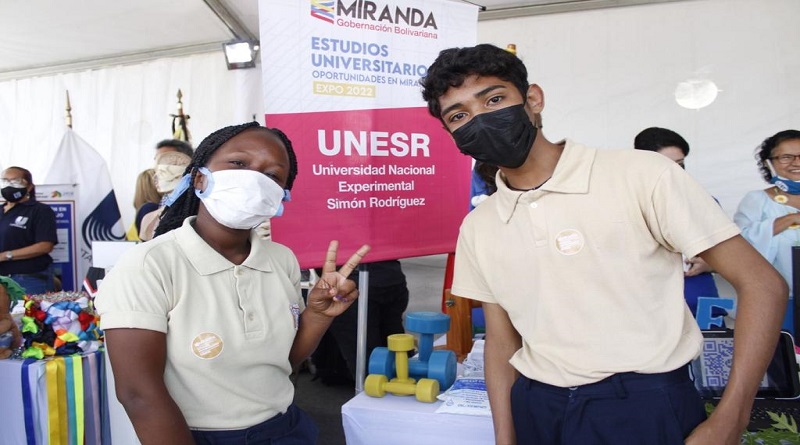Gross fixed investment (GFI) has posted six consecutive quarters of year-on-year growth driven by the construction and agricultural machinery sectors, in what is already considered “genuine growth” and not just a “rebound” in relation to the fall from the beginning of the pandemic.
This was stated in statements to Télam the economist Orlando Ferreres, president of the consulting firm of the same name, in an analysis endorsed by the heads of the chambers of the two sectors mentioned, such as Gustavo Weiss (Argentine Chamber of Construction) and Eduardo Borri (Argentine Chamber of Agricultural Machinery Manufacturers).
Ferreres, who was Secretary of Economic Programming for Minister Néstor Rapanelli in 1989, maintained that “there is a genuine growth in investment” based on an increase in demand, and encouraged in turn for what he characterized as “a kind of indirect subsidy” represented by the gap between the different exchange rates.
That difference, he said, drives the import of capital goods, a phenomenon that was mitigated in part by the effects of the Russian invasion of Ukraine on the cost of transport and the use of containers.
Although the numberlevel close to 20% of the Gross Domestic Product (GDP) is still below the “desirable” 25%the economist warned that the percentage is “quite important” if the drop in consumption compared to previous years is considered.
gross fixed investment was not exempt from the fall that economic activity registered in general in the first sections of the pandemic, with rinterannual etrocesses of 29.4% and 16.4% in the second and third quarters of 2020respectively, according to the Ferreres measurement.
The reversal of this trend began in the last part of that year, with an improvement of 5.1% compared to the fourth quarter of 2019, which was followed by a series of double-digit growth, under cover of the low base of comparison that 2020 had left.
Thus, the year-on-year increase in the IBF was 20.5% in the first quarter of 2021, 36.9% in the second, 21.3% in the third and 16.8% in the fourth.
At that time, the doubt among analysts was whether in 2022 it was going to be possible to continue with the positive trend, taking into account that the meager levels of 2020 were no longer available as a point of comparison.
Farm machinery
It is precisely because of the 14.7% growth in the first quarter (with an investment estimated at US$7,263 million per month) that Ferreres considers the IBF’s increase to be “genuine” and, in terms of boosting demand, he gave as an example the agricultural machinery sector, with units that “cannot be delivered until October”.
About, Borri gets excited and assures that, in the case of agricultural machinery, “we could extend the growth of the sector to more than six quarters,” since “for nine quarters it has been growing at a rate of 20% per year in sales and production.”
“At first the demand was great and the companies were not prepared to face it,” admitted the head of Cafma, who pointed out that later “the companies began to prepare and possibly now we have an installed capacity greater than the demand, but we have a stock important sales”.
Borri also highlighted that in the sector “we are generating around 5,500 direct jobs per year”, and warned about one of the bottlenecks in what he called ´the interior of the interior´: “we are short of labor, It’s hard for us to get people.”
In this sense, he indicated that “last year we increased exports by 60%, although on relatively low values, and we went from US$50 million in 2020 to US$80 million in 2021.”
“In this quarter we would be showing a 35% increase in exports, which allows us to project a level of US$ 110 million for the whole year,” he added.
Construction
For its part, Weiss stressed that the construction activity “is growing since June 2020shortly after the start of the pandemic, because public works were exempt from the confinement decree”.
Likewise, in a simultaneous phenomenon to that of the emergence of Covid-19 and the rethinking of work modalities, Weiss warned that “under cover of the gap between the different dollar rates, people began to look favorably on the possibility of build a house in a closed neighborhood or away from the big cities, or simply renovate your house”.
In this way, he argued, the sector is trationed by public works and small private enterprisesmeanwhile “large private works are a little calmer, but as a whole the industry is at important levels”.
Borri also noted the importance of import substitution and said in this regard that “in some areas, in the last year of (the Presidency of Mauritius) Macri worked with 70% local production and 30% imported. Today that relationship is 90% and 10%”.
However, he expressed his cautions about the continuation of this improvement, based on the dependency on imported inputs.
“So far we are not seeing significant complications and in the first quarter we have a growth of 17%, although it could happen that we are producing with inputs purchased in 2021 and there is still no real impact,” he admitted.
In the same way, Ferreres forecasts a slowdown in the growth of the investment index for the coming months, in which the attention “will be focused on internal indicators such as the exchange rate, inflation and the evolution of consumption, and on external geopolitical factors”.










